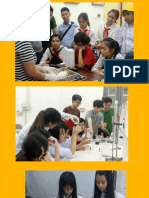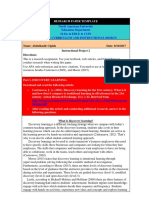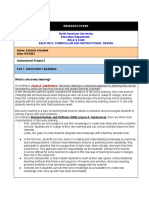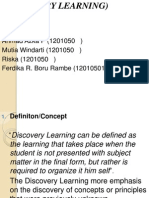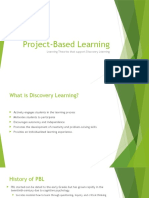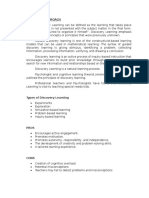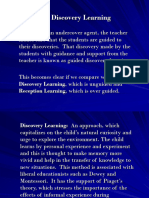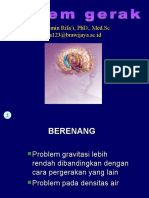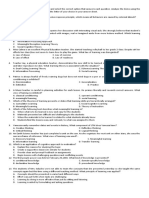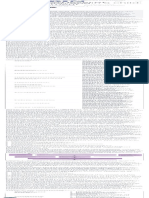0% found this document useful (0 votes)
56 views16 pagesDiscovery Learning
Discovery learning is a student-centered teaching method that emphasizes exploration and active engagement with content, promoting critical thinking and deeper understanding. Teachers facilitate this process by designing creative lesson plans and maintaining classroom management, while students take responsibility for their learning. Despite some challenges, structured discovery learning enhances student engagement and retention compared to traditional methods.
Uploaded by
shamel.irishCopyright
© © All Rights Reserved
We take content rights seriously. If you suspect this is your content, claim it here.
Available Formats
Download as PDF, TXT or read online on Scribd
0% found this document useful (0 votes)
56 views16 pagesDiscovery Learning
Discovery learning is a student-centered teaching method that emphasizes exploration and active engagement with content, promoting critical thinking and deeper understanding. Teachers facilitate this process by designing creative lesson plans and maintaining classroom management, while students take responsibility for their learning. Despite some challenges, structured discovery learning enhances student engagement and retention compared to traditional methods.
Uploaded by
shamel.irishCopyright
© © All Rights Reserved
We take content rights seriously. If you suspect this is your content, claim it here.
Available Formats
Download as PDF, TXT or read online on Scribd
/ 16

